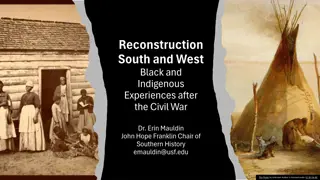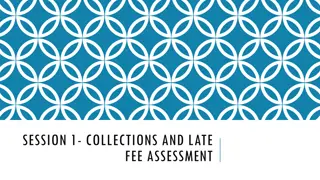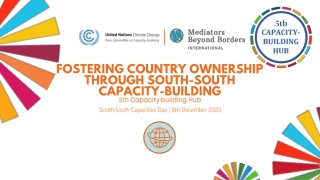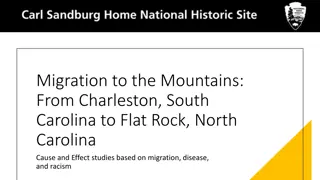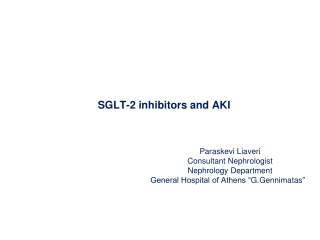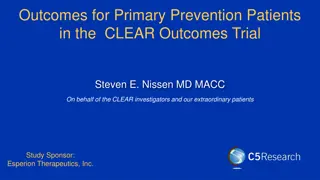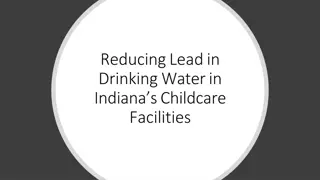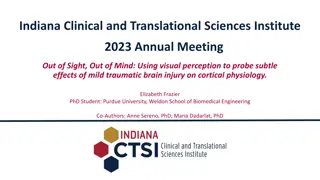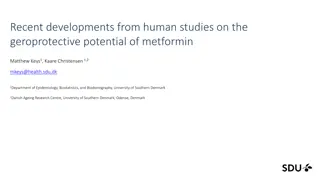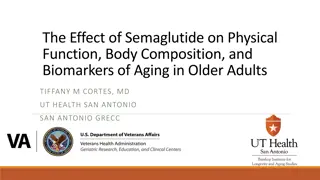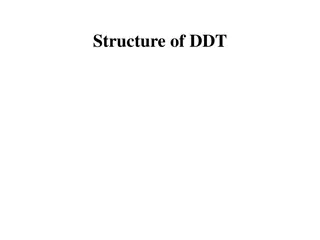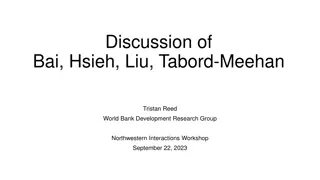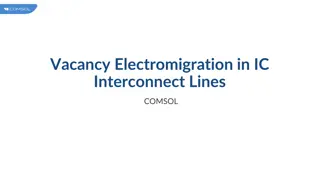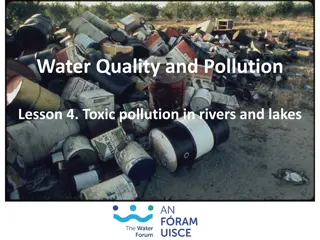South West Radiotherapy Late Effects Service
The South West Radiotherapy Late Effects Service, led by Lisa Durrant, offers clinical expertise, service development, education, and professional leadership in managing long-term radiotherapy-related symptoms. Learn more about the benefits and limitations of local services.
Download Presentation
Please find below an Image/Link to download the presentation.
The content on the website is provided AS IS for your information and personal use only. It may not be sold, licensed, or shared on other websites without obtaining consent from the author. Download presentation by click this link. If you encounter any issues during the download, it is possible that the publisher has removed the file from their server.
Presentation Transcript
South West Radiotherapy Late Effects Service Lisa Durrant PhD Macmillan Consultant Radiographer Beacon Radiotherapy Centre Musgrove Park Hospital Taunton
Why do we need late effects services? Survivorship is increasing LWBC (Personalised care) initiative Improved documentation (treatment summaries) Reduced costs (remote follow up and self management strategies) Supported patients with general information and signposting (H&W events, Cancer Support Workers, level 2 psychological training) It has not provided a mechanism to manage long term, life changing symptoms
What does Beacon Late Effects service offer? Clinical expertise: Management and support for patients with long term radiotherapy related symptoms. Single point of contact for patients to access the correct resources. Source of expertise for other HCPs Service development & research: Building links with non-cancer services, developing pathways, working with CCG and community services, developing novel & sustainable solutions Education, training and development: Support for new services, providing training and sharing best practice, teaching, webinars etc. Professional leadership & consultancy: SoR special interest group for late effects, contributing to national guidelines
What can a local service achieve? Improve outcomes for patients (reduce symptoms, improve function, QoL) Provide excellent patient care Promote and support self management Prevent inappropriate referrals Prevent referrals in circles Reduce appointment costs Provide quality data
but a local service cannot achieve? Care and support for everyone! Out of area patients Referral to patients local services Responsibility for out of area patients Data to underpin other services Broad research base access to large patient numbers Universal expertise one person can not be an expert in everything. Late effects cover all anatomical sites, all diagnoses, multiple treatment types etc.
Leaving it too late Radiotherapy services have been set up with no shared planning or strategy Patients develop complex symptoms Where do responsibility lie? Cancer patients without cancer Lack of (meaningful) data Lack of consensus on terminology Lack of evidence, guidance and trials Problems with commissioning and funding Reliance on short term charity funding Inequity in service provision Retrospective services for legacy patients
Managing radiation late effects models of care Personalised treatment Most centres offer no late effects support A few offer retrospective late effects support Personalised aftercare We can work together to offer prospective late effects management Personalised care
Collecting data Currently lack of consensus Lack of terminology Lack of diagnosis Lack of reporting Lack of outcome measures Lack of standardisation How many people have late effects? What are their symptoms? What was treated? How are they managed? PRDA Best Practice Pathway: Incidence and Prevalence Gastro 2- 20%, 11%, 59%, 45% Urinary 3.7- 52% Pain 1/3, many moderate to severe and unmanageable Sexual difficulties females 24%, 80% Sexual difficulties males at least 50%, 67-85%, 5-51% Lymphoedema, not understood Bone 4- 20%
Scale of the problem? 2030 1 million with side effects (main increase in older patients) 170,000 in South-West living with and beyond cancer, of these 42,000 could have treatment related consequences Cost of the problem? Data shows repeated appointments in secondary care over many years (2 million/67 million) x 100 = 3% 3% of 5.6 million = 170,000 9333-TSO-2900664-NCSI_Report_FINAL.pdf (publishing.service.gov.uk) Primary care? Societal costs unable to work due to unmanaged symptoms Personal costs financial toxicity and quality of life 170,000 legacy patients does not include new patients
What could a regional service achieve? Build on the LWBC initiative Work with GP s to build late effects into EMIS and/or develop a register Provide equity of service to cancer patients after treatment across the region Role extension and support across the region. Therapeutic rads area key to driving improvements in reducing/preventing/predicting late effects Produce an information & resource hub for patients, GP s and HCP s Produce data to develop tariff to manage patients with late effects and provide simple equipment Gather meaningful data to inform guidance and best management of patients UK first Intersectoral working in alignment with NHS & CCG Save costs, outpatient appointments, GP appointments, inappropriate meds
Regional model Local referral pathways dealing with simple cases and regional pathways to help manage more complex cases (RT Service Spec 2019) Single point of access to correct services Virtual MDT Standardised documentation to improve data collection and outcomes Co-ordinated training Core outcome data collection Local centres are required to link with local specialities to develop referral pathways (GP s, lymphoedema, colorectal, gastroenterology, dermatology, orthogeraitrics, continence, counselling, neurology, breast screening, dieticians, sexual health) Regional centres for complex symptoms, specialist surgery, specialist diagnostics
SW RT ODN (RT Service Spec 2019) Macmillan funding Alliance funding Local funding SW CSU (data, costings, evaluation) Clinical team 8 Radiographers 1 Navigator Project Team Steering Group (inc patients) Data analyst Project managers Commissioners Macmillan funded Part Macmillan funded Alliance or locally funded 0.4 WTE No funding
SWRLES: South West Regional Late Effects Service Rad led service in each centre Links to local services for referrals Point of access for patients What is a LE radiographer? Scope of practice Governance & safety Job descriptions MDT decisions Referral Criteria Education & Training Clinical service Outreach & development Data Information resources Guidance Training others Innovation and trials Patient level data Who, what, when Service level data What does it cost / save Commissioning and sustainability
Data Developed with commissioners Key Performance Indicators Basic service numbers Quality of Life Pathways and providers of care Outcome measures Use of primary care Reporting and recording (SNOMED) eHNA Collecting data and sharing data (sustainable services are not funded on anecdotal evidence)
SWRLES: Core Data Standardised introduction letter (IG ratified) Referral form Consultation form Activity data (appts, phone calls, referral etc.) Core Outcome Measures Standardised set of outcomes that should be measured and reported, as a minimum Patient Reported Outcome Measures (PROMS) Quality of Life Anonymised data Sites use a patient code Postcode
Data management Individual sites Input information Data is assessed, scored, presented by Navi Access their own site data All anonymised Data available to analyst Large dataset of useful, core information
Core Outcome Set Descriptive stats & qualitative data (referral and consultation forms) Quality of Life EORTC QLQ-C30 and EQ 5D 5L Cancer-quality-of-life-survey-summary-report-first-data-release.pdf (england.nhs.uk) Site specific EORTC questionnaires - PROMS Questionnaires - EORTC - Quality of Life : EORTC Quality of Life Macmillan HNA Long term condition management Patient Activation Measure
EORTC Questionnaires (European Organisation for Research and Treatment of Cancer) Produced by evidence review with patient and HCP input Validated, scorable, population data Different languages Data on action levels, minimally important differences Licensed but free Many cancer types Relevant to radiotherapy late effects Questionnaires - EORTC - Quality of Life : EORTC Quality of Life PR20 radiation proctitis H&N43 head and neck 2054 Immune Checkpoint inhibitors Metastatic malignant melanoma (irAEs immune related adverse events)
Further information? Further information? Add whatever will improve your service Bladder diary Blood tests Pain measures Food diaries Bristol Stool Chart Range of movement measurements Fatigue scores This information is not required to be submitted - it does not add to the core data set
Sharing data - Coding and Primary Care Beyond follow-up Primary care Treatment not recorded properly Could be used to flag potential late effects SNOMED CT (systemised nomenclature of medicine clinical terms) Radiation injury Chronic radiation proctitis Code diagnosis or symptom
Building pathways costing a service Proposed model Universal, targeted, and specialist Patients seen, referred to national services CCLERS National Fatigue service DDRC National Radiation Cystitis Service 4: National specialist services Level 3: Patients seen, referred to regional services Ano-rectal physiology service , SNS services Regional specialist services Patients seen, referred to local services Colonoscopy Bladder instillations Lymphoedema team Level 2: Local specialist services Level 1: Patients seen and managed by rad-led service Resources to help patients self-manage Resources for GPs to provide basic management Cost effective Service? Late effects radiographer service Need to show that radiographer-led service is not just a referral/triage service and we can manage a cohort of patients ourselves
Progress to date Progress to date As one region Supported each other Discovered new services Services are now seeking collaboration and information (RT ODNs, oncology menopause, SW IO service) Developing SOPs, protocols, information leaflets Commissioners are actively seeking data All have referrals As many regions?... Big data ePROMS Emphasis on living rather than surviving
Cheltenham & Gloucester Samantha Bostock Samantha.Bostock@nhs.net Bristol Zoe Walker lateeffects@uhbw.nhs.uk Bath Hazel Clarke Ruh-tr.RTlateEffects@nhs.net Exeter Alexandra Board A.Board@nhs.net Taunton Lisa Durrant, Vicki Hands RTLateEffects@SomersetFT.nhs.uk Michele Chirossel (regional navigator) Michele.Chirossel@somersetft.nhs.uk Truro Emma Crozier Emma.crozier1@nhs.net Torquay Suzanne Hill Suzanne.hill@nhs.net
Beacon Late Effects Service lisa.durrant@somersetFT.nhs.uk 01823 342933 @DrLisaDurrant


